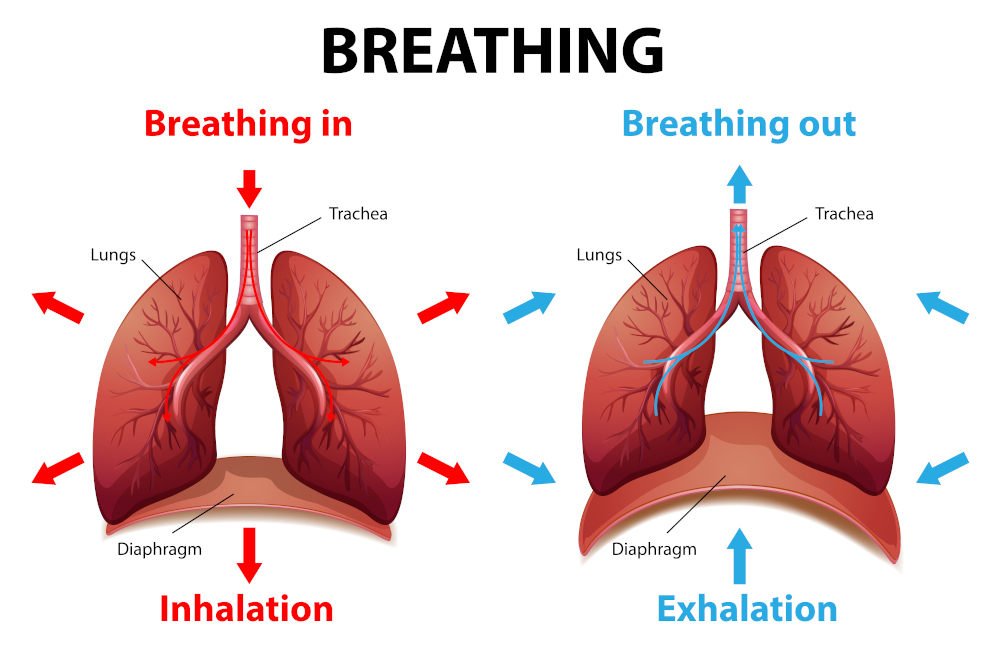“Sing from the diaphragm, not from your throat!” is a line you’re likely to hear repeated by everyone from your uncle Carl to your choir leader Betty. But what does that even mean?
At first glance, the phrase might seem rather nonsensical because the diaphragm is primarily an inspiratory muscle (meaning it’s used to breathe in) and it certainly can’t sing. Furthermore, no matter how extremely you lower or raise your larynx, your vocal folds (which are housed inside the larynx) are certainly always gonna stay in your throat. So taking the expression literally obviously won’t do us much good, but could there be a more cryptic meaning behind it? After all, the phrase must have gotten so popular for a reason, right?!
Before speculating on the hidden meaning of that common expression, let’s look at what the diaphragm is and what it does. The diaphragm is a dome shaped muscle attached to the lower ribs, the sternum, and the spine. It separates the thoracic and abdominal cavities. When it contracts, the diaphragm descends and thereby increases the volume of the thoracic cavity (containing the heart and lungs) which creates a negative pressure in your lungs and sucks the air in through your nose or mouth. Lowering the diaphragm by contracting it will push the abdominal contents down and out, which means your abdominal wall will bulge out slightly when the diaphragm is contracted.

Most singing, obviously, happens on an exhalation. So what’s the diaphragm’s function after inhalation and during singing? Strategies here can differ greatly, but they all come down to managing the subglottic pressure, which is the air pressure below the vocal folds (sub = below, glottis = the vocal folds and the space between them). The pressure below the vocal folds influences several parameters including loudness, pitch frequency and airflow. Generally, the higher the pitch you’re aiming for and the louder you’re singing, the higher the subglottic pressure will need to be. And it will need to be maintained as the air supply in the lungs diminishes.
The first role of the diaphragm here is a passive one. We can contract the abdominal muscles (rectus abdominis, external and internal obliques, and transversus abdominis) to pull in the abdominal wall, pushing the abdominal contents in and up (opposite from the diaphragm’s work during inhalation) which will push the diaphragm up. That will increase the pressure in the lungs by decreasing the volume of thoracic cavity and through the trachea (windpipe) increase the pressure below the vocal folds. As stated, this pressure needs to be maintained while you’re staying on the same pitch and volume, so it should be a gradual process. For this reason, I find that very often when the choir directors or singing teachers ask of their singers to “use their diaphragm more” to reach higher pitches or get louder, they actually mean engaging the abdominal muscles more against a firmer closure of the vocal folds, which act as a valve at the top of the trachea.
There are also several scenarios in which we might actively contract the diaphragm while singing. The diaphragm will contract when we need to quickly lower the subglottic pressure. For instance, quickly jumping to a lower note or performing an abrupt diminuendo (decrease in volume) will often involve an active contraction of the diaphragm. Another scenario where we might actively contract the diaphragm is where we use it to provide resistance to the abdominal movement. While at first glance it might seem counterproductive to use opposing muscle groups together, in human physiology we often see antagonistic muscles being contracted together when a highly precise movement is needed. In that case the diaphragm acts as a break, slowing down the abdominal movement.
Bear in mind that there’s a lot more to breathing mechanics and breath support technique for singing than this article aims to cover, so if you’d like to learn effective breath support methods for singing, email me through the website’s contact form to arrange a lesson.
So… We’ve established what the diaphragm can do and that it definitely can’t sing on its own and that the vocal folds can’t leave the throat (unless surgically removed 😅). So if we don’t just dismiss the opening line of this article as nonsense, which would probably be unwise because there’s got to be something to it since it’s such a common mantra, what could the possible meaning be? The logical conclusion that I’ve come to is that the goal of it is to focus the singer’s attention on the power production from the breathing apparatus to avoid scratchy and tight sensations in the throat that arise from poor technique. However, if the singer is not given concrete and clear instructions on how to achieve that goal, I find that “Sing from your diaphragm!” is nothing more than a concealed way of saying “Sing better!” without a clear idea of how the singer could achieve that.
Suggested further reading and watching:
Breathing Behavior During Singing by Johan Sundberg

Comments
One response to “How on earth do you “sing from the diaphragm”?”
[…] aim shifts into “singing in Overdrive” or “finding mixed voice” or “singing from the diaphragm” where the initial goal was to capture a certain vibe and musicality of a song or a phrase. […]